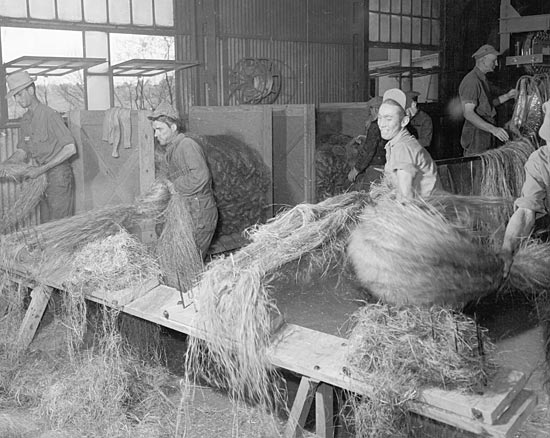In a revision of an earlier act of 1936 related to regulating the practice of pharmacy, the General Assembly approved an amendment on March 12, 1938. Among its many provisions was a prohibition of "the possession or sale of the narcotic drug marihuana, sometimes called 'loco weed' or any derivative of the drug cannibus americanus." This prohibition did not, however, apply to its possession and sale by "duly licensed wholesale druggists, registered pharmacists, legally qualified physicians, dentists, and veterinary surgeons," subject to various safeguards for verifying the legitimacy of all prescriptions. Violations were to be punished by fines of up to five hundred dollars and imprisonment of up to one year. In addition, a second conviction of a health-care professional would result in forfeiture of certification.

Hemp-hackling machines at Versailles, Kentucky, ca. 1920. Philadelphia Commercial Museum Collection, Kentucky Historical Society Collections. Hemp, or Cannabis sativa, was first grown in Kentucky in 1775. From 1840 to 1860, Kentucky's production was the largest in the United States, peaking in 1850 at 40,000 tons, with a value of $5,000,000. Scores of factories made twine, rope, oakum to caulk sailing ships, and cotton bagging. The crop declined in the 1890s because of increased demand for tobacco and competition from imported hemp from the Philippines, though it continued as the state's largest cash crop until 1915. In 1941, when the federal government saw a possible shortage of manila rope from the Philippines, farmers were encouraged to grow hemp once again for use in World War II. The crop declined again in 1945.
